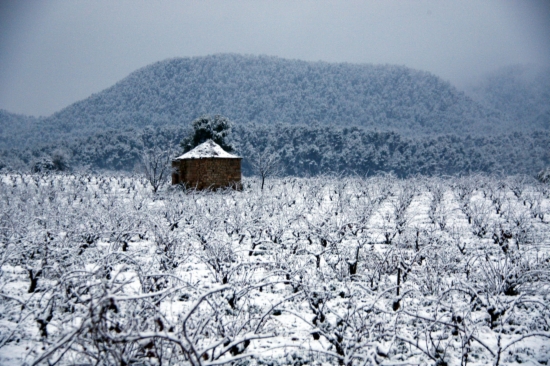10 years since freak March storm left Catalonia covered in snow
On March 8 2010, the country was hit by the heaviest snowfall of the century so far, with major disruptions to transport and power networks

March in Catalonia usually brings with it the start of a Mediterranean spring, with more daylight hours, rising temperatures, and sporadic showers that freshen up a landscape beginning to bloom with blossom, greenery, and wildflowers.
Yet, that was not the case in 2010, when for two days at the beginning of March, much of Catalonia was covered in a blanket of unseasonal snow that caused widespread disruption to the country's transport network and power infrastructure.
March 8 will largely be taken up with the celebration of International Women's Day, but it will also mark the 10-year anniversary of the snowstorm that took Catalonia by surprise, which so far is the worst the country has suffered in this century.
The spring snowstorm mostly affected the regions of Girona in the north, Barcelona and its surroundings, Lleida in the west, and northern areas of Catalonia's southern province of Tarragona, with one or two places in the country managing to escape entirely.
The cause of the storm was an anticyclone between the UK and Germany that produced an area of low pressure with relatively warm and humid air that came into contact with colder air, which produced precipitation in the form of snow over Catalonia.
Barcelona brought to a standstill
In Barcelona, the snowstorm, which at its worst coincided with the schools letting out in the afternoon, brought the city almost to standstill. In fact, almost 25,000 students would miss class the following day as some 70 schools in the city were forced to remain closed.
The storm left much of the country blanketed in snow, with depths reaching 15cm in parts of Barcelona and surrounding cities, such as Granollers and Terrassa. At the Fabra Observatory on the Collserola mountain range above the city, 20cm of snow was recorded.
Above all, the snow affected the transport network, with traffic on Barcelona's ring roads and access points moving at a crawl, and in some cases the local police insisted that the only cars that could circulate on some roads must have snow chains fitted.
Meanwhile, the local commuter train network was beset with incidents, while in the city there was no bus service. In fact, the only means of public transport that was working with any normality was the metro, which was kept open all night as an exceptional measure.
Thousands stranded on main roads and motorways
In other parts of Catalonia, thousands of cars and lorries became trapped on main roads and motorways, unable to move while the storm lasted, with many stranded drivers forced to spend the night in their vehicles or in temporary facilities provided by nearby towns.
There were also power cuts when many transmission towers fell down under the weight of ice and snow. In the northern region of Girona, for example, some 200,000 households and businesses were left without any electricity.
In fact, the counties in Girona were the areas in which most snow fell, which reached 50cm in some places. In the town of Espinavell in Girona's Ripollès county a record of 75cm was recorded, while Santa Pau in Garrotxa county got 60cm, and the city of Olot 54cm.
A snowstorm, and especially one of those proportions, is the last thing anyone expects at the beginning of spring. Fortunately, such freak weather conditions don't come around often, and you have to go back to Christmas 1962 to find one that matches the storm 10 years ago.